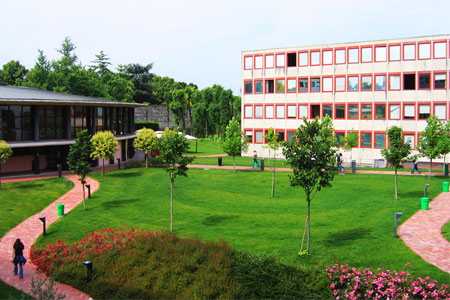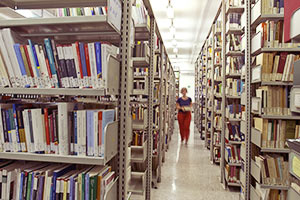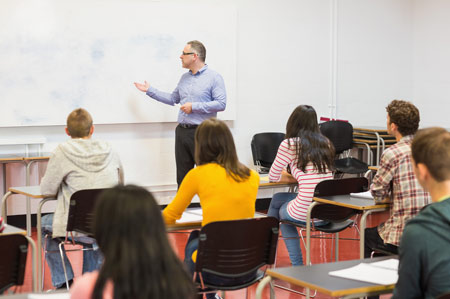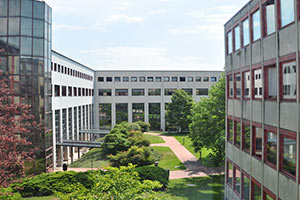Learning outcomes
This course is institutional in nature and aims to use new methods to enhance or supplement the art history background students have already acquired in their previous education. It allows novices of the discipline to engage with it gradually yet systematically and using a non-superficial approach.
The course is also designed to train all the students in “reading” works of art. Taking into account the multiplicity of existing methods in the study of art history, the course aids students in acquiring basic historical knowledge to instruct them, above all, in how to recognize and assess artwork in stylistic and qualitative terms. All of this is combined with the objective of providing the methodological and cultural bases for a well-informed reading of all the fields of the visual arts and images from any time period and context.
The introductory classes are therefore devoted to the various methods that contribute to knowledge about art history and related specialized disciplines. Students will also be provided with a basic dictionary of terms that they can translate into the chosen languages of their study programs. The initial lessons will employ a seminar format to focus on describing images as a preliminary exercise to prepare students to engage with the historical discipline.
The content, and time frame in particular, the leading figures and their languages, the contexts and techniques covered in this course are all chosen keeping in mind that, for the majority of students, ‘History of Modern Art’ is a preparatory course for ‘History of Illustration’. However, this history of art course addresses modern art on a European scale, what in the past was theorized as Western art, along with its fundamental connections, so as to be useful for students of foreign languages and literature.
Indeed, this course provides the framework of a diachronic route through modern art history from the late Gothic to Neoclassicism. It refers mainly to the Italian setting, but also references the milestones and key figures in the history of other European countries to provide comparative terms. In addition to the analysis of style, this course therefore also focuses on the contours and history of Italian and European art, that is, the historical and cultural context surrounding centers of artistic production and patronage.
In this regard the course seeks to provide the tools students need to recognize iconographic markers, to engage in an iconological consideration of certain works, to use sources and to understand the main techniques.
It also includes a section on the history of collecting and the development of the major European museums.
The goal is to offer students the opportunity to add an understanding of art history, or more generally of the visual arts with their specific idioms, to the knowledge they have already acquired in the study of languages and the history of foreign literature.
The introductory classes are therefore devoted to the various methods that contribute to knowledge about art history and related specialized disciplines. Students will also be provided with a basic dictionary of terms that they can translate into the chosen languages of their study programs. The initial lessons will employ a seminar format to focus on describing images as a preliminary exercise to prepare students to engage with the historical discipline.
The content, and time frame in particular, the leading figures and their languages, the contexts and techniques covered in this course are all chosen keeping in mind that, for the majority of students, ‘History of Modern Art’ is a preparatory course for ‘History of Illustration’. However, this history of art course addresses modern art on a European scale, what in the past was theorized as Western art, along with its fundamental connections, so as to be useful for students of foreign languages and literature.
Indeed, this course provides the framework of a diachronic route through modern art history from the late Gothic to Neoclassicism. It refers mainly to the Italian setting, but also references the milestones and key figures in the history of other European countries to provide comparative terms. In addition to the analysis of style, this course therefore also focuses on the contours and history of Italian and European art, that is, the historical and cultural context surrounding centers of artistic production and patronage.
In this regard the course seeks to provide the tools students need to recognize iconographic markers, to engage in an iconological consideration of certain works, to use sources and to understand the main techniques.
It also includes a section on the history of collecting and the development of the major European museums.
The goal is to offer students the opportunity to add an understanding of art history, or more generally of the visual arts with their specific idioms, to the knowledge they have already acquired in the study of languages and the history of foreign literature.
Bibliography
Vivere l’arte. Vol 2. Dal Rinascimento al Rococò, edited by C. Fumarco and L. Beltrame, Verona, Bruno Mondadori, 2012.
Additional chapters to the manual on Late Gothic (vol. 1) and Neoclassicism (vol. 3) and other handouts are available at the copy shop ‘Replay’. Introductory topics and terminology: lecture notes.







